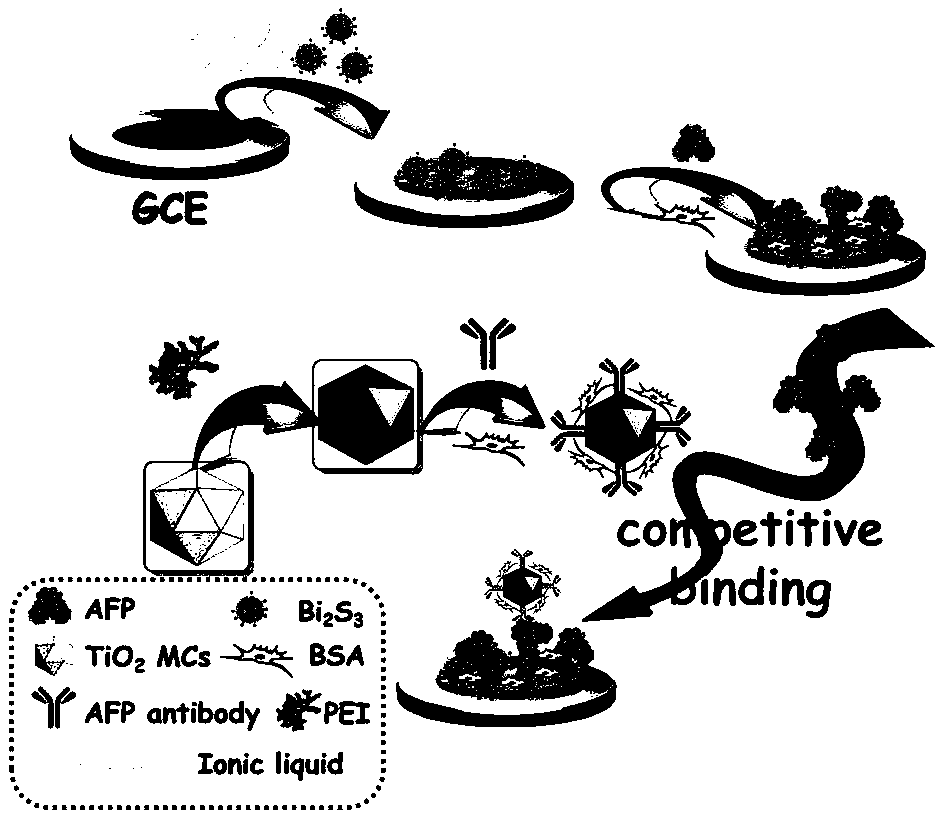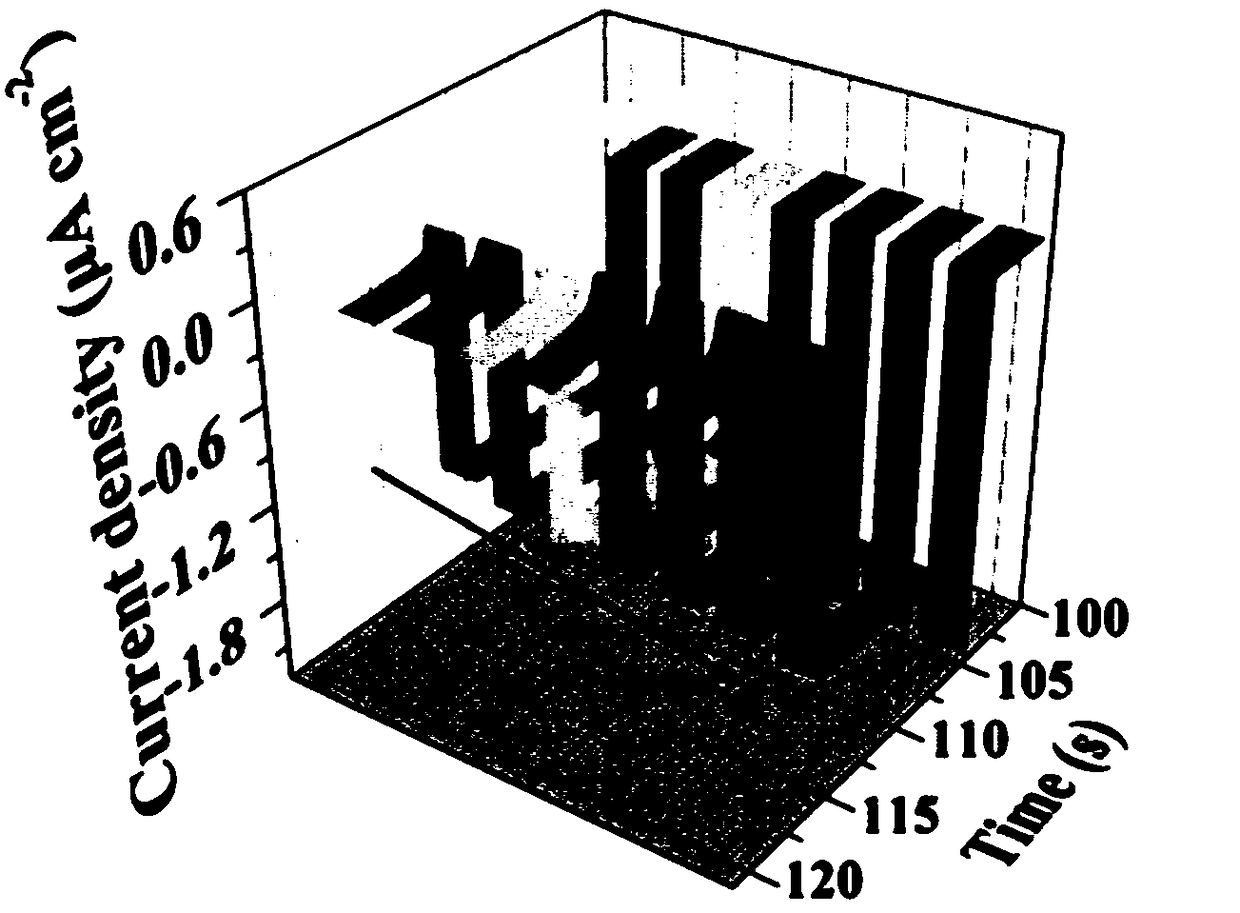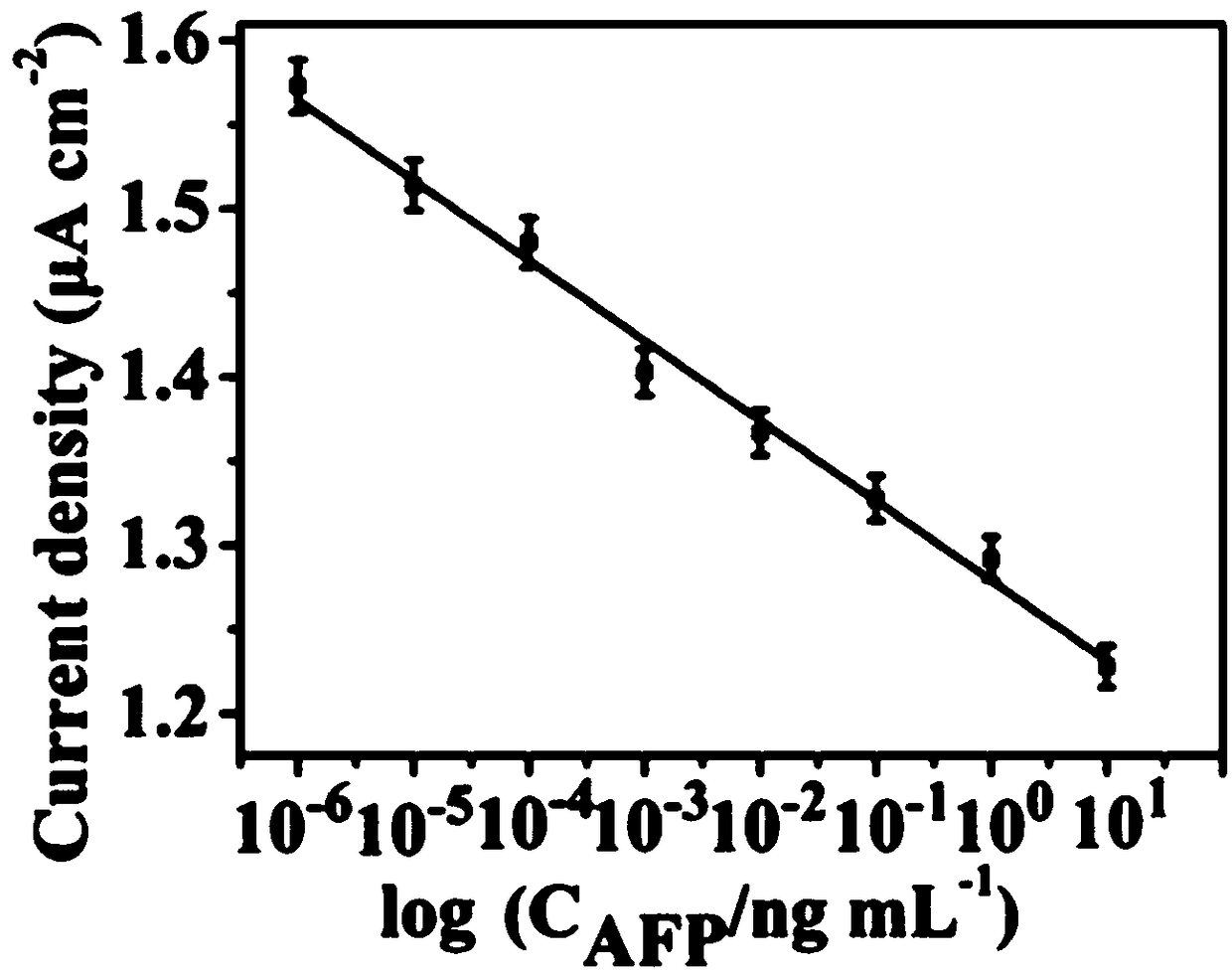Preparation and application of alpha-fetoprotein photoelectrochemical competitive immunosensor based on double-sensitized structure
A technology of alpha-fetoprotein and photoelectrochemistry, applied in the direction of material electrochemical variables, scientific instruments, instruments, etc., can solve the problems of low photocurrent conversion efficiency, limited light absorption range, and inability to effectively prevent the recombination of photogenerated electron-hole pairs , to achieve the effect of improving photoelectric conversion efficiency and expanding the range of light absorption
- Summary
- Abstract
- Description
- Claims
- Application Information
AI Technical Summary
Problems solved by technology
Method used
Image
Examples
Embodiment 1
[0025] Preparation of a photoelectrochemical competitive immunosensor for alpha-fetoprotein based on a double-sensitized structure (such as figure 1 shown):
[0026] (1) Pretreatment of glassy carbon electrode (GCE): GCE is first mechanically polished and polished on the suede covered with alumina powder, washed with secondary water to remove residual powder on the surface, and then moved into an ultrasonic water bath for cleaning until it is cleaned, and finally Wash thoroughly with ethanol, dilute acid and water in sequence;
[0027] (2) Add 3 μL of Bi at a concentration of 3 mg / mL dropwise 2 S 3 The nanosheet suspension is placed on the surface of a clean glassy carbon electrode, dried under an infrared lamp, and cooled to room temperature;
[0028] (3) Drop-coat 3 μL of ionic liquid (IL) with a concentration of 1 mg / mL on the surface of the above electrode, dry it under an infrared lamp, and cool to room temperature;
[0029] (4) Soak the modified electrode in a mixtur...
Embodiment 2
[0034] An application of a photoelectrochemical competitive immunosensor for alpha-fetoprotein based on a dual-sensitization structure, the steps are as follows:
[0035] (1) Measured by a three-electrode system, with the Bi prepared in Example 1 2 S 3 / IL / AFP / Ab-TiO 2 -PEI modified electrode is the working electrode, Ag / AgCl is the reference electrode, and the platinum wire electrode is the counter electrode. The photoelectrochemical workstation is used for detection. The voltage is set to 0.1V, and the lamp is switched on and off every 10s. The monochromatic light emitted by the xenon lamp The excitation light source is filtered by a monochromator before use;
[0036] (2) In PBS buffer solution with pH 7.0, detect 1×10 by photoelectrochemical workstation -6 ng / mL-10ng / mL series of alpha-fetoprotein standard solutions with different concentrations, by recording the different current signals before and after switching the lamp, draw the working curve. Figure 2 A is differ...
Embodiment 3
[0039] Bi described in Example 1 2 S 3 Preparation of nanosheets:
[0040] 0.00375 mol Bi(NO 3 ) 3 · 5H 2 O (purchased from Shenyang Xinguang Chemical Factory) was dissolved in 25 mL ethanol and stirred for 20 min to obtain solution A; 0.005625 mol Na 2 Dissolve S in 30 mL deionized water and stir for 10 min to prepare solution B. Add solution B slowly to solution A; when a large amount of black suspension is produced, add 0.032 mol urea (CO(NH 2 ) 2 ) and 20 mL of deionized water and sealed the prepared mixed solution in an autoclave, and kept it at 180°C for 12h; subsequently, filtered the mixed solution to obtain a black solid product, washed it with deionized water and dried in air; Finally, the above-prepared Bi 2 S 3 The nanosheets were dissolved in N, N-dimethylformamide (DMF) and diluted to prepare solutions with different concentrations.
[0041] TiO as described in Example 1 2 Preparation of mesogens:
[0042] First, dissolve and disperse 0.25 g of polyvin...
PUM
| Property | Measurement | Unit |
|---|---|---|
| concentration | aaaaa | aaaaa |
Abstract
Description
Claims
Application Information
 Login to View More
Login to View More - R&D
- Intellectual Property
- Life Sciences
- Materials
- Tech Scout
- Unparalleled Data Quality
- Higher Quality Content
- 60% Fewer Hallucinations
Browse by: Latest US Patents, China's latest patents, Technical Efficacy Thesaurus, Application Domain, Technology Topic, Popular Technical Reports.
© 2025 PatSnap. All rights reserved.Legal|Privacy policy|Modern Slavery Act Transparency Statement|Sitemap|About US| Contact US: help@patsnap.com



